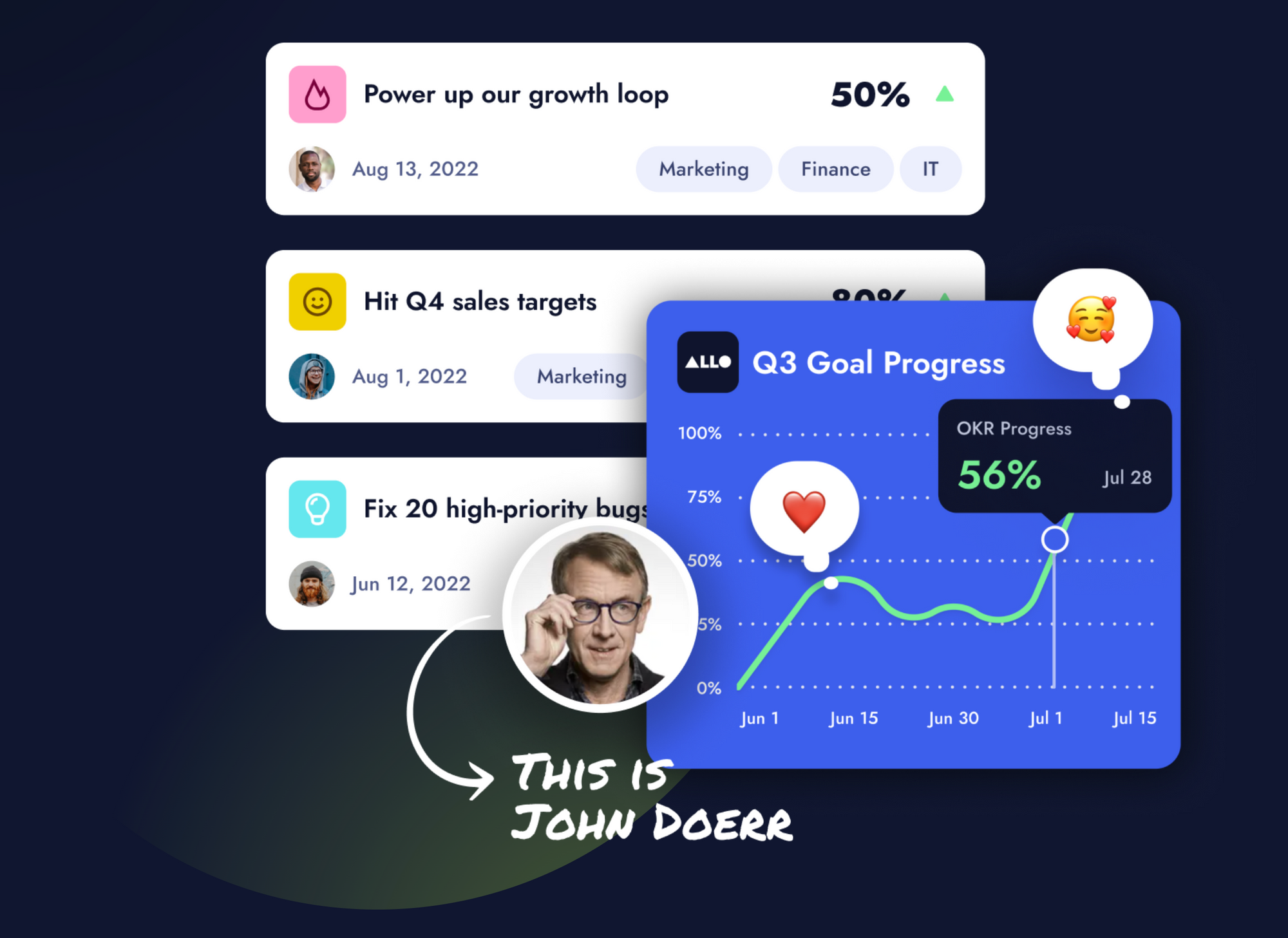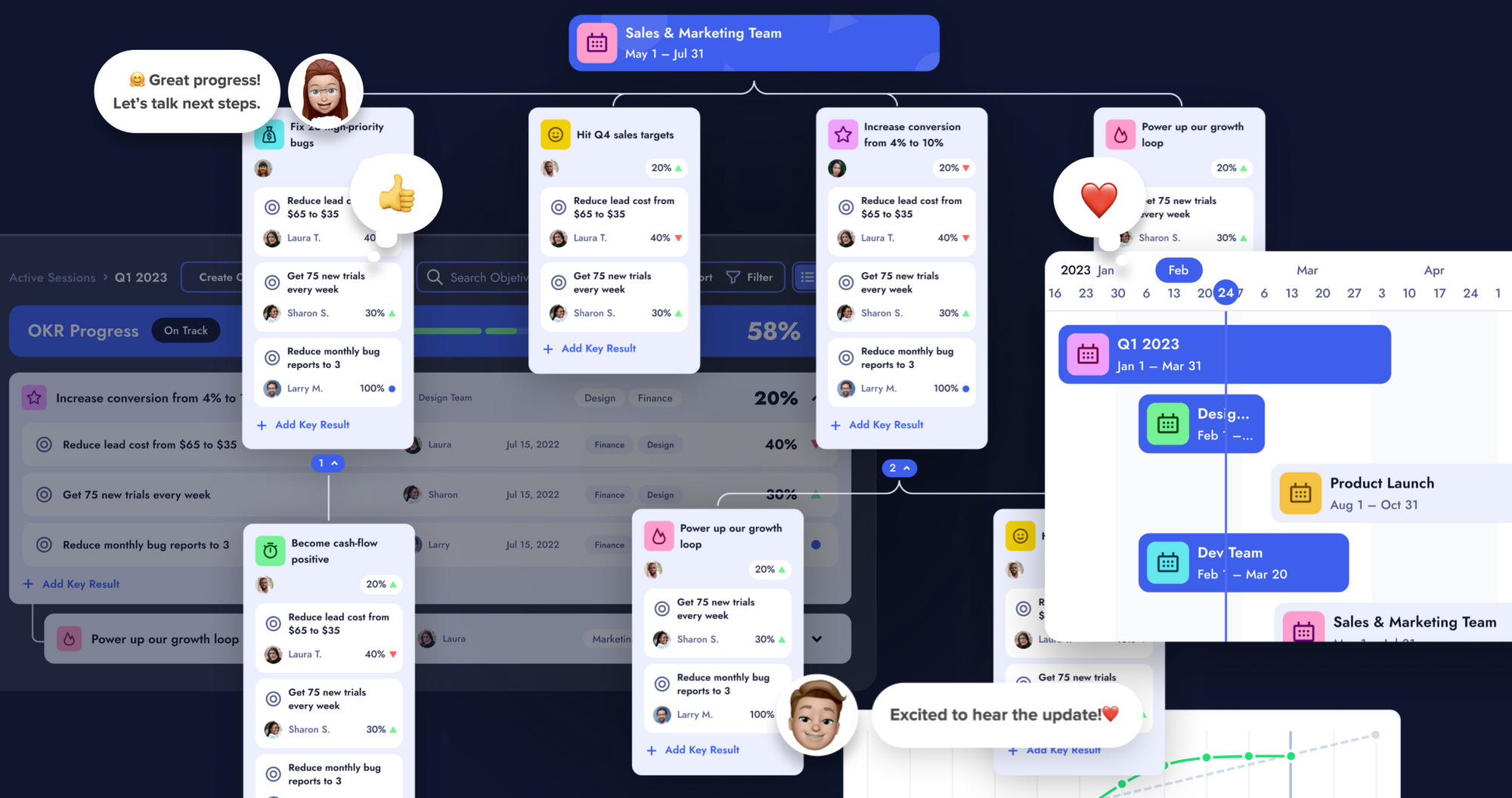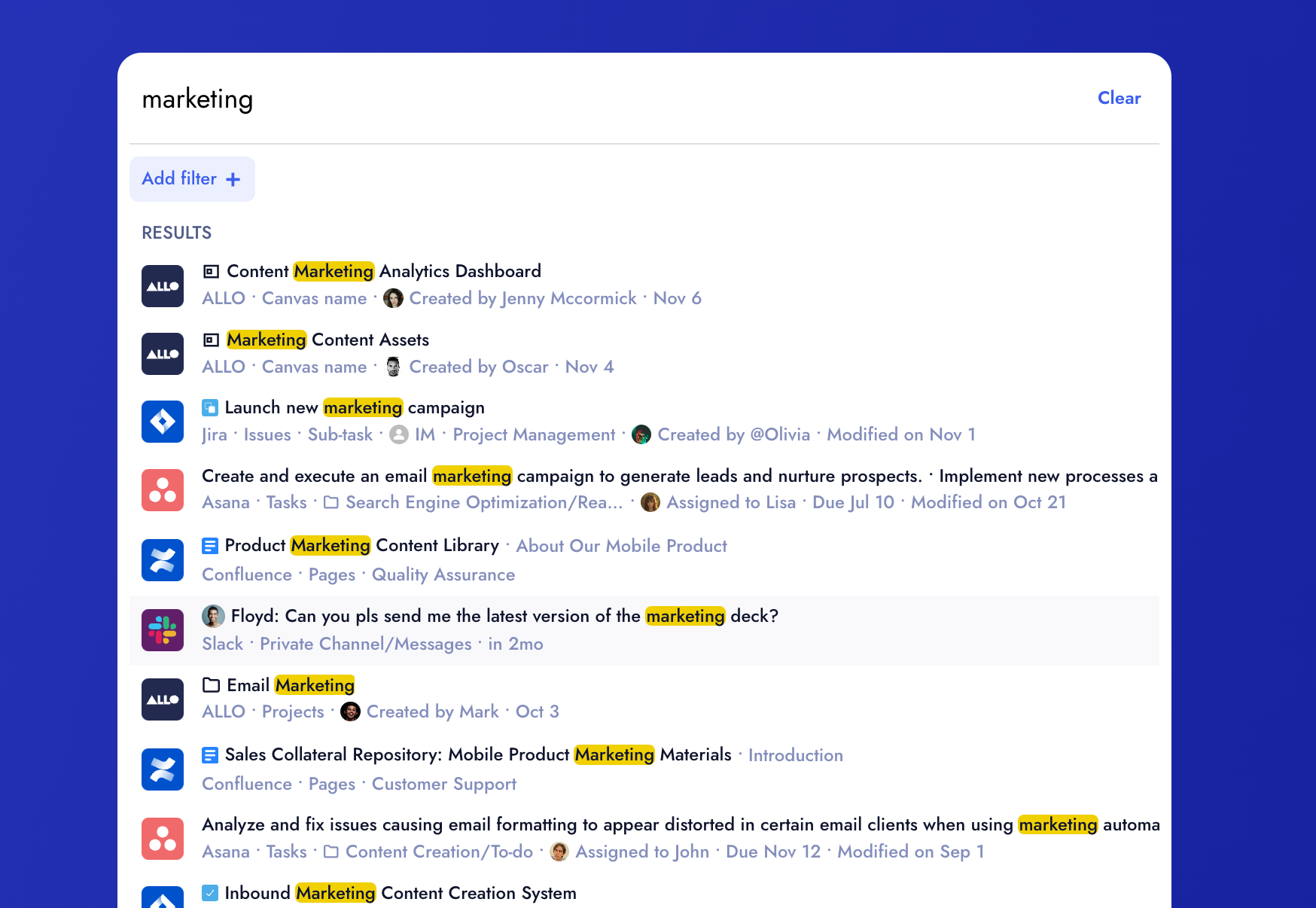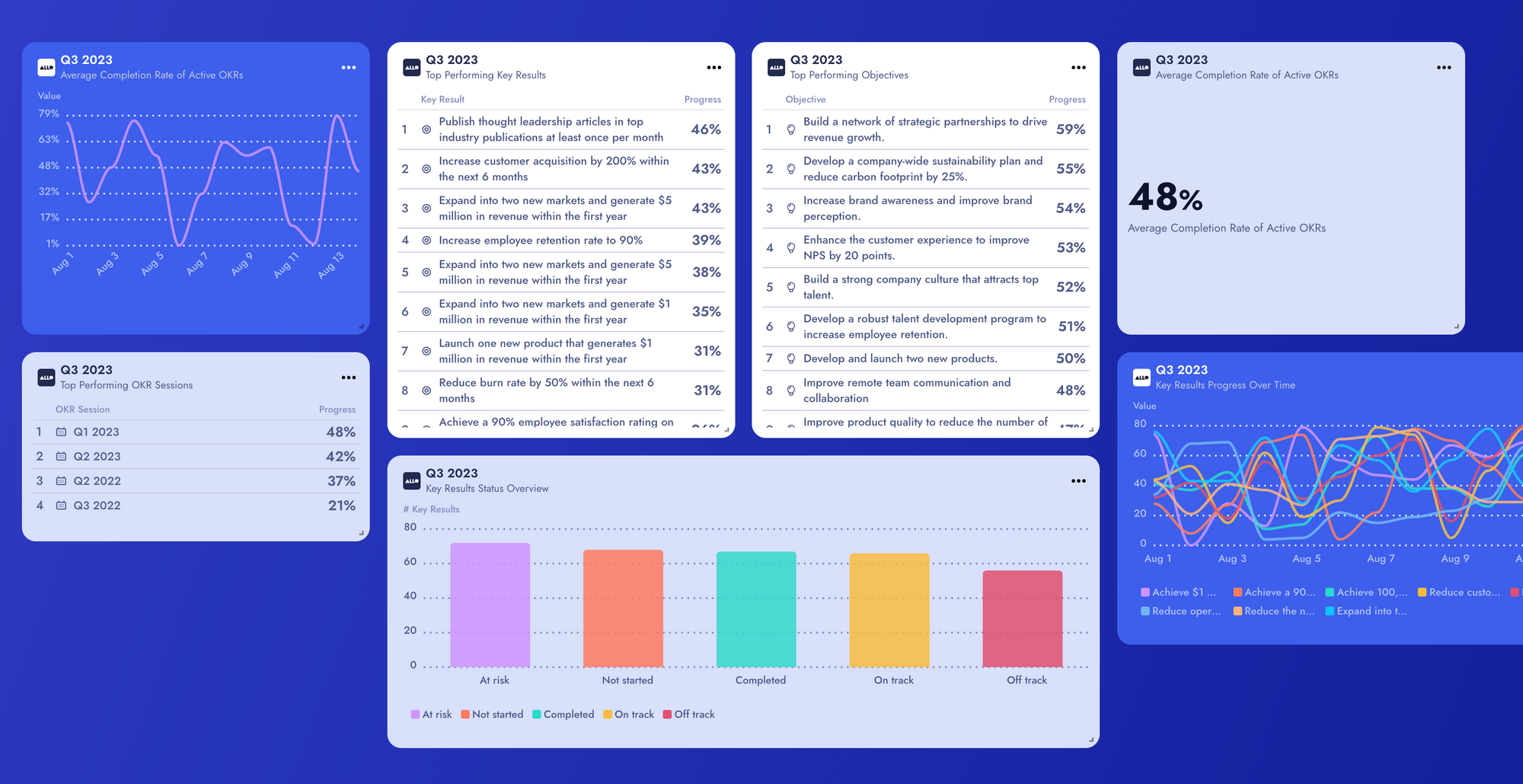4 Pitfalls in Harnessing the 5 Superpowers of OKRs: Why They Fail and How Companies Can Succeed

What are OKRs?
Objectives and Key Results (OKRs) have revolutionized the way companies set goals and measure success. This powerful framework, embraced by industry giants like Google, Netflix, Adobe, and more, and startups, aligns teams and keeps everyone focused on what truly matters. However, implementing OKRs successfully requires more than just understanding the concept. It demands a strategic approach that taps into the core strengths that make OKRs so effective.
5 Superpowers of OKRs: A Guide to Avoiding Common Pitfalls

Enter John Doerr's 5 Superpowers of OKRs: Focus, Alignment, Commitment, Tracking, and Stretching. These superpowers represent the essence of what makes OKRs work, turning them from a mere management tool into a driving force for organizational growth. But like all powerful tools, OKRs must be wielded with care and understanding.
- Focus: Concentrating efforts on what matters most.
- Alignment: Connecting every level of the organization to shared goals.
- Commitment: Ensuring everyone is invested and engaged in achieving the OKRs.
- Tracking: Monitoring progress and adapting as needed.
- Stretching: Pushing boundaries and striving for excellence.
Unfortunately, many companies stumble in their OKR journey, falling into pitfalls that undermine these superpowers. Whether it's a lack of clear visualization, a gap in engagement, a disconnect from daily work, or an obstacle in usability, these pitfalls can turn a promising OKR approach into a frustrating failure.
In this article, we'll explore the 4 common pitfalls that hinder the effective harnessing of the 5 Superpowers of OKRs. We'll delve into why these pitfalls occur and how companies can navigate around them to achieve success with OKRs. By understanding these challenges and knowing how to overcome them, organizations can unlock the full potential of OKRs, turning them from mere words on paper into a living, thriving part of their success story.
1. Visualization: Making OKRs Visual and Accessible
The Problem: Lack of Visual Appeal

In many organizations, OKRs become buried in spreadsheets and lifeless documents. Without a clear and appealing visual representation, these critical goals can easily become obscured and disconnected from daily activities. This lack of visualization leads to a failure in harnessing the Superpower of Focus, as team members struggle to concentrate their efforts on what matters most.
According to management expert Dave Ulrich and psychologist Wendy Ulrich, employees are happier and thrive when their work has a clear purpose, and has meaning. They want to be part of something bigger than themselves. This aligns with the People Management Survey 2018, which discovered that 58 percent of workers said that a boss’s worst trait is not setting clear goals. Furthermore, Facebook examined hundreds of thousands of answers from their employee surveys, concluding that purpose is one of three things that employees value most.
The Solution: Whiteboard and Multiple Views

The key to overcoming this challenge lies in transforming abstract OKRs into tangible visual insights. Implementing interactive planning through a whiteboard can turn these objectives and key results into clear and actionable representations. By offering multiple view options such as tree view, list view, and the ability to zoom in/out, organizations can cater to different preferences and learning styles. These visual tools not only make OKRs more engaging but also foster a greater sense of ownership and commitment among team members.

Visualization plays a crucial role in enhancing the Superpower of Focus. By providing a clear visual guide to what's important, organizations can align their teams and concentrate their efforts on shared goals. A dynamic visual approach transforms OKRs from a static concept into a living, breathing part of the organization. It creates a roadmap that guides teams towards success, ensuring that everyone is on the same page and moving in the right direction.

2. Engagement: Keeping Teams Aligned and Committed
The Problem: Lost Track and Forgotten Goals

Keeping teams engaged with OKRs is a common struggle, leading to a potential loss of focus and alignment. Gallup found that regular communication about roles and clear expectations are fundamental to employees' needs. Additionally, a study revealed that a significant portion of employees seek organizations with a meaningful mission or leave their jobs due to feeling uninspired.
The Solution: Building a Culture of Commitment and Collaboration
Overcoming the engagement gap requires a continuous and intentional effort to keep OKRs at the forefront of everyone's minds. Daily interaction with OKRs, regular updates, collaborative planning, and transparent communication can turn a neglected framework into a vibrant part of the organizational culture. Creating a collaborative spirit around OKRs ensures that they are not isolated targets but integrated aspects of everyday work. It fosters a sense of ownership and enthusiasm that drives teams to achieve their goals.

Engagement is directly linked to the Superpower of Commitment. By creating a culture where OKRs are regularly discussed, reviewed, and celebrated, organizations can build a strong sense of commitment to these goals. Engagement is not a one-time event but an ongoing process that requires nurturing, encouragement, and innovation. It turns OKRs from a mere management directive into a shared mission that resonates with everyone in the organization.

3. Connection: Linking OKRs to Actual Work
The Problem: Isolated OKRs, Disconnected Work
Many organizations find themselves investing heavily in specialized OKR software, often bundled with expensive HR platforms. Yet, despite the financial commitment, OKRs can remain isolated and disconnected from daily work. It's a bitter truth that these tools, while valuable in the HR context, may not always bridge the gap between OKRs and the actual work being done in tools like Asana, Jira, GitHub, Slack, Figma, Notion, Google Drive, Confluence, and more.
OKRs are about the work we do every day, and they should be for the entire company, not only for the executives. This disconnect can turn a promising OKR approach into a theoretical exercise, far removed from the practical realities of everyday work.

The Solution: Seamless Integration with Everyday Apps
Bridging the connection between OKRs and daily work requires integration with the very tools that teams rely on. By linking OKRs to Asana tasks, Jira tickets, GitHub issues, Slack channels, Figma designs, Notion pages, Google Drive documents, Confluence pages, and other everyday tools, organizations can ensure that OKRs are part of the workflow. This integration fosters relevance and alignment, turning OKRs from distant targets into tangible goals that guide daily decisions and actions.

Creating a seamless link between OKRs and daily tools is vital for strengthening the Superpower of Alignment. It ensures that OKRs are not just a management tool but a guiding force that shapes decisions, priorities, and actions across the organization. Alignment is about making goals part of the fabric of daily work, connecting every level of the organization to shared targets.

Connecting OKRs to actual work through popular tools is not a minor detail; it's a critical link that defines the success of the OKR framework. By recognizing the importance of this connection and implementing strategies to integrate OKRs with everyday tools, organizations can unlock the Superpower of Alignment. This vital step transforms OKRs from abstract concepts into practical guides, aligning teams and driving them towards shared goals with clarity and purpose.

4. Usability: Making OKRs User-Friendly
The Problem: Navigating the Maze of OKRs
Usability is often overlooked in the OKR process, leading to a complex and intimidating experience for many team members. When OKRs become a maze of jargon, intricate structures, and cumbersome navigation, they impede rather than enhance success. This complexity becomes a hindrance, obstructing the Superpower of Tracking and turning a potentially empowering tool into an obstacle.
The Solution: Simplification and Support

Turning the tide on this challenge requires a focus on simplification and support. By designing OKRs that are intuitive, user-friendly, and aligned with tools like Asana, Jira, and others, organizations can make OKRs accessible to everyone. Offering ongoing support, clear guidelines, and interactive tutorials can further demystify the OKR process, ensuring that everyone, regardless of their familiarity with the concept, can engage with OKRs effectively.

Usability is essential for enhancing the Superpower of Tracking. By simplifying the OKR process and making it user-friendly, organizations enable accurate monitoring and adaptation. It allows for seamless navigation, reduces the need for endless meetings, and fosters a transparent view of progress and history. Usability turns the tracking of OKRs from a burdensome task into an insightful and rewarding experience, aligning teams and keeping everyone on the path to success.

Usability is not a mere convenience; it's a vital aspect of successful OKRs. By recognizing the importance of making OKRs user-friendly and by implementing strategies that simplify and support the process, organizations can unlock the Superpower of Tracking. This focus on usability lays the groundwork for focus, alignment, engagement, and overall success. It ensures that OKRs are not just a management directive but a shared journey that empowers and aligns teams, guiding them with clarity, simplicity, and purpose.

Conclusion: The Path to Successful OKRs
The journey to successful OKRs is filled with opportunities and obstacles. By understanding the common pitfalls and learning how to navigate them, organizations can unlock the full potential of this powerful framework. Embracing the 5 Superpowers of OKRs, as defined by John Doerr, lays the foundation for a successful implementation that goes beyond mere goal-setting.
- Visualization: Making OKRs clear and accessible through interactive tools, ensuring a focused path towards success.
- Engagement: Building a culture of commitment and collaboration, keeping teams aligned and invested in their shared goals.
- Connection: Linking OKRs to daily work through popular tools like Asana, Jira, GitHub, Slack, Figma, Notion, Google Drive, Confluence, and more, ensuring relevance and alignment.
- Usability: Simplifying the process and making OKRs user-friendly, enabling accurate tracking and adaptation.
These four pillars, grounded in the 5 Superpowers, provide a comprehensive roadmap for organizations seeking to harness the power of OKRs. It's not just about setting goals; it's about creating a living, breathing framework that resonates with everyone in the organization. It's about turning abstract concepts into actionable insights, aligning teams, fostering engagement, and driving towards shared success.

The path to successful OKRs is not a straight line; it's a journey that requires continuous effort, innovation, and adaptability. By embracing visualization, engagement, connection, and usability, organizations can transform OKRs from a management tool into a strategic ally. It's a path that leads to clarity, alignment, and success, guided by the wisdom of industry leaders and the shared commitment of the entire team.
Learn more:







